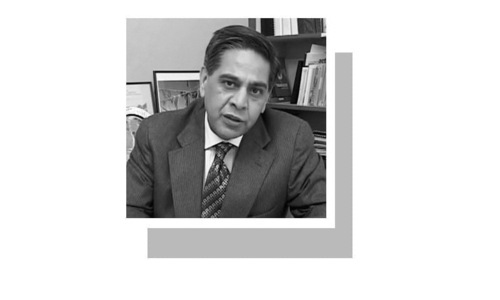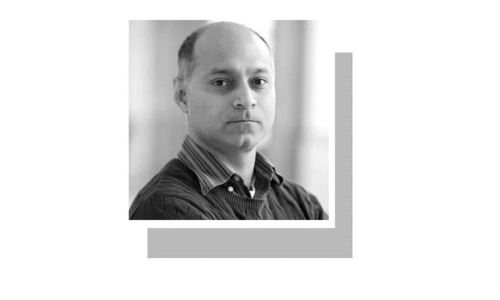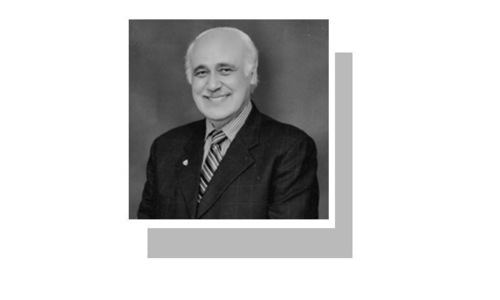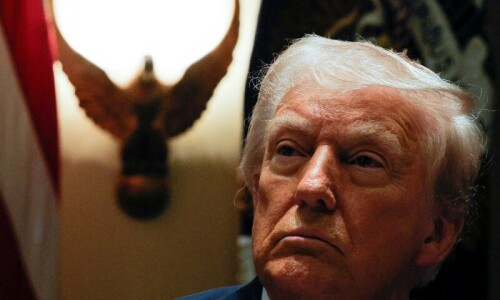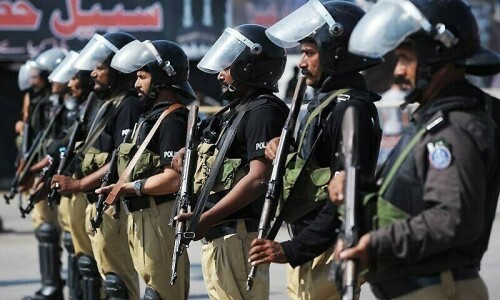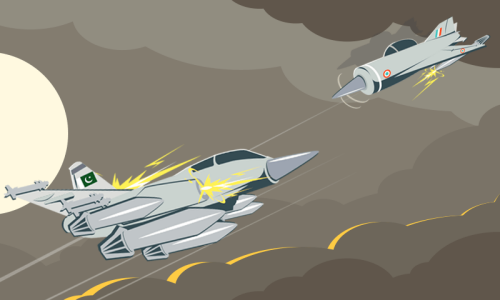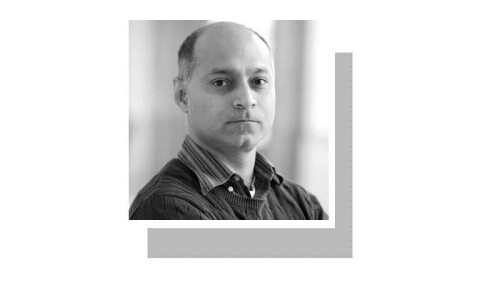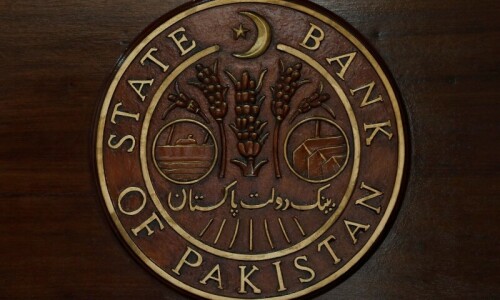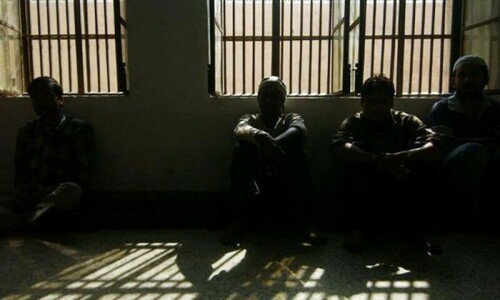Why do we need heroes?
IN history, the images of heroes are always exploited by the ruling classes, political parties and social and cultural groups to mobilise the sentiments of the people in order to further their own interests. These heroes are imposed upon the popular conscience as a means of persuasion and propaganda.
Intellectuals fully participate in this campaign to project so-called heroes as perfect, infallible and as a source of the people’s aspirations. Inspired by such images the masses are readily persuaded to sacrifice themselves and fully support those who claim to be the followers and disciples of the so-called heroes.
When the ruling classes face a crisis of confidence and become unpopular they seek the help of some personality who enjoys credibility and trust among the people. He is transformed into a hero and such ideas and thoughts are attributed to him which suit the designs of the ruling classes. The historicity of the hero disappears and he is given a new image which is promoted by the ruling classes.
Such is the case with Quaid-i-Azam Mohammad Ali Jinnah in Pakistan whose image as a liberal and secular leader is in conflict with his religious persona as promoted by those in power to serve their purpose. In our country, both religious and liberal political parties have used his myth to promote their own agendas.
A hero is also needed in case of a political upheaval. When rulers and their supporters lose the trust of the masses they look for a hero to rescue them from their turmoil. One such example is that of Napoleon III, who, after assuming power as emperor of France failed to solve the problems of the country. People were disillusioned by his policies and he was losing his grip on power. To regain his authority, he decided to use the name of his uncle Napoleon I and resolved to bring his dead body from St Helena to rebury it in Paris.
The whole event was played out with great fanfare. Napoleon’s coffin was brought in a state funeral procession and was buried in the heart of the city. An elegant mausoleum was built in his honour. The people of France for a time revived memories of Napoleon I and his conquests as his nephew tried to strengthen his position. He failed again and eventually had to vacate the throne and leave France.
In some cases, it is true that people themselves make and unmake heroes. If a person wielding power tries to fulfill their dreams and bring peace and prosperity to the people, they wholeheartedly support and adulate him. But the moment he fails to meet their expectations, he is disgraced and humiliated. We have the example of Mussolini who came to power with the promise of making Italy great once again.
For a short while, the people were enthused by his domestic policies and his expeditions to colonies in the African continent. They saw in him a Roman emperor who was reviving glories of the ancient past. However, when he got Italy involved in the Second World War and the Italians faced the horrors of war and ultimate defeat, they turned against him. He was murdered by a mob and his body was hung upside down as a sign of their hatred and frustration.
It is interesting that in the world of capitalism, the image of heroes is often commercialised and used for profit. Che Guevara, the revolutionary hero who fought along with Fidel Castro to liberate Cuba from dictatorship and later went to Bolivia to bring about a radical change, was murdered by the Bolivian army in collusion with the CIA. Soon, the image of the revolutionary hero became a widespread commercial symbol throughout the world and his posters became a popular symbol of heroism.
In the 1960s and 1970s, one could see his picture in every student’s room. Slowly, his revolutionary ideals dimmed and his picture became a fashion symbol. His memory is revived again and again but not to inspire revolution or change but to celebrate him as a fad. Business is thriving in his name. There are not only books and posters, there are also T-shirts and other symbols which are used by those who have nothing to do with Che Guevara’s ideals.
Does this mean the age of hero worship is going to end? The answer is both yes and no. In democratic societies where the people play an important role, the image of the saviour is on the decline. Governments change after elections and no permanent individual remains in power for a long time.
With the phenomenon of collective leadership taking root, the role of institutions has become more and more vital and thus deters an individual from turning into an all-powerful person. He is compelled to rely on the advice and suggestions of professionals while deciding on crucial state matters.
In countries where institutions and collective leadership are weak, an individual assumes all power and undermines the normal democratic process. In such a society, political parties and social groups also rely on the image of a hero as they do not have creativity and talent enough to mobilise the people independently.
They bring back heroes of the past and use them for their political agenda. Intellectual bankruptcy and lack of credibility are replaced by hero worship. It is easy to use the image of a hero for spurring the sentiments of the people rather than trying to convince them by rational arguments. That is why we need heroes in order to mislead the people for an agenda which could not be accomplished otherwise.
Help the poor directly
EVEN the least informed amongst us are now aware that there has been a sharp increase in the international prices of wheat and oil. Admittedly, some groups (other than farmers) rebut this as a reason for enhancing the support price of wheat with the argument “but wheat is grown in Pakistan and hence international developments cannot be presented as explanations for the higher price of wheat/atta”.
How can we shield ourselves from a globalised environment, especially given our porous borders?
Without getting into the argument of whether there should be a support price for wheat and the level at which it should be set as a floor price to protect farmers, it is time to accept that the days of cheap food, even staple diet items, and oil are gone. Neither is it possible for the government to continue to subsidise these products for all sections of society, given its fiscal position.
This means that even the middle- and lower middle-class will have to take a hit in their purchasing power in the short-term and change their consumption patterns before their incomes rise adequately to enable them to adjust to this reality. However, there is little doubt that the poorest households are ill-equipped to shoulder this additional burden. They need to be protected through some targeted subsidy, largely by shifting the savings from the general subsidy on oil and wheat — from which even the more affluent households benefit — to finance such support.This writer would propose a combination of cash transfers and an employment guarantee scheme, the latter for the poor able-bodied and able to work but unable to find employment in lean parts of the agricultural season, especially in the backward/least developed districts.
This article, however, deals only with cash transfers. Cash transfers as social assistance programmes would only target the poor and vulnerable segments of the population. These would include the disabled, the elderly, female-headed households, orphans, widows and unemployed and unskilled household heads with large families.
Direct cash grants are a better way to assist the poor. Indirect mechanisms like utility stores — from which all segments of the population, even those not deserving, benefit — and food stamps are a round-about, administratively cumbersome and expensive way (the transaction costs to the government being high) of achieving the objective of assisting the poor. Cash transfers will give poor households freedom with respect to consumption choices and greater flexibility on how to meet these needs, which will vary from one household to the next, depending on individual situations.
Pakistan’s poverty line is estimated to be approximately Rs1150 per capita per month (per adult equivalent). The six million households below the poverty line already have some sources (using an average of approximately two bread earners per household) to meet between 45 to 60 per cent of expenditures on subsistence living. This assumes subsistence living to be represented by an amount roughly one-third lower than the minimum wage of Rs6000 per month. The additional cost per annum of a cash transfer scheme of Rs2000 per month to help around three million of the poorest households will not exceed Rs70bn, barely 0.7 per cent of the GDP.
To make this cost estimate more realistic and check duplication of efforts to achieve the same objective i.e. poverty reduction, funds earmarked for wheat subsidy should be reduced and diverted to such a scheme. These would include subsidy being provided through utility stores and poverty alleviation programmes funded through zakat and Pakistan Baitul Mal and similar programmes being run by the provincial government — such as the Punjab government’s Kifalat Allowance that supports 640,000 households.
A major proportion of the remaining budgetary allocation needed to finance this proposal can also be met from the gradual withdrawal of subsidies for electricity (partly because GST is not levied on electricity consumption) and diesel (the subsidy on the latter being more than Rs16 per litre). This is admittedly a politically challenging endeavour.
A self-targeting mechanism can be employed for the urban areas, where only the poorest katchi abadis would be chosen for the disbursement of this cash grant — the destitute and vulnerable would be targeted by virtue of their inhabiting a very poor locality. We will have to accept that there could be some leakage, perhaps even to the tune of 10 per cent, to those less deserving than envisaged as eligible under such a scheme. The focus should be on delivery mechanisms to improve targeting.
Admittedly, such a selection process cannot be employed for the rural areas. A more transparent system of targeting is recommended in this case, allowing for the active involvement of the union council, thereby using an existing recognised institution, which is also accountable to the local population. The union councillors would be required to select potentially eligible recipients of the cash subsidy and have the selections verified and validated through the following means:
a. The identity of households selected for the cash grant would be publicly displayed at the offices of the union council as well as at public places in the community so that the process of selection remains transparent and can be challenged by the community.
b. The public distribution of cash transfers should take place on a pre-notified date. Public officials and elected representatives should be present at the time of disbursement to lend authenticity and credibility to the process. Distribution of the cash grant in a public forum, in the presence of peers and the community of beneficiaries, would ensure transparency and accountability and keep away the ineligible who would wish to avoid public scrutiny.
c. There should be institutionalised third-party monitoring of the selection process to ensure that targeting has been transparent as well as subjected to third-party evaluations of the distribution process.In the medium to long term, it is recommended that a database be created, based on household profiling conducted for the entire country using the NIC of the head of household as an identity for the profiling. Admittedly this will be an administratively complex and costly exercise, the starting point for which would be the database of the Pakistan Baitul Maal. Its authenticity would be confirmed and refined over a period of time through third-party evaluations.
This database would then be shared between the cash transferring agency, the Baitul Maal and the zakat council so as to improve the productivity of, and synergy among programmes. It would also attempt to minimise duplication and correct serious exclusion errors in the selection of beneficiaries and avoid substantive abuses and corruption in the implementation of the programme. This database would also ensure that not more than one person from a household becomes eligible for the disbursement. Furthermore, there would have to be reassessment and certification of beneficiaries every two to three years.
The spirit of Jamshoro
FOR someone who was born and brought up in Karachi, I must confess the cultural distance between the metropolis and the hinterland exists not just in miles. The inhabitants of the city, especially as young and brash as Karachi, have built a hybrid identity from the experience of constant change, chaos and cultural interface.
Meanwhile, the people of the interior of Sindh, steeped in the folklore and poetry of its Sufis, zealously guard the purity of their language and interpret life through the prism of conventions shaped by ancient history.
What Pakistan, a county that brought together heterogeneous people from all over South Asia, has needed since its inception is an education policy to unify cultures through knowledge and respect for pluralism. While this dream of the founding fathers is forgotten in the midst of political volatility and confrontation, opportunities for reconciliation and an understanding of Pakistan’s diverse traditions are lost.
As someone who was born in the decade that followed Partition, I grew up without the language skills to understand Bhitai and Bulleh Shah. It took a study of world cultures to feel the need to seek what was so close to me at Moenjodaro, Harappa, Sukkur, Taxila, Kohistan, Thar and Sibi.
A recent opportunity to visit Jamshoro, where I was invited to participate in the First International Art Seminar hosted by the Institute of Art and Design, Sindh University, led to three days of enriching dialogue.
To experience both intellectuals and fakir singers quoting Shah Latif’s verse like a mantra, almost like a verbal and musical talisman not unlike the black thread that is rubbed on the ‘sacred’ instruments of the mendicants at the shrine of the great saint, it took the urban cynic in me some time to understand how deeply woven in the social and cultural fabric is the Sufi message. No theoretical text or debate can convey the intrinsic connection with a timeless philosophy that expresses the concerns of the people in a language that resonates in them.
A renewed optimism among the students and faculty at the Institute of Art and Design seems to have come with the new building that the department recently got after years of struggle. With it appeared a desire to build a bridge between received knowledge and the dynamic ideas of the new century.
The seminar seemed to set the tone for this change by creating space for debate and discussion on a wide range of issues that confront artists as national and international scholars read their papers.
The exchange with poets, writers, scholars, artists and journalists on the artist’s role in society, however fundamental, was important in a society that exists on so many planes of social awareness. The multiple viewpoints presented by the participants communicated how art has moved from the linear thought process of modernism to a lateral embrace of visual culture which recognises context as a critical force.
It was refreshing to see the inclusion of two papers based on the field research of archeologists who are putting together fragments of the history of development of the image and its significance in prehistoric times. Dr Salim claimed the flint tools created from quartz in the Potohar Plateau were one of the earliest creative acts as the maker used his intelligence to select the material and then perfected a technique to craft its serrated edge.
Information on rock carving and cave drawings presented by Dr Ihsan Ali concentrated on the iconography of early man in Pakistan that art historians cannot ignore. The same was true of Dr Misbah Rasheed’s study on the hybrid symbolic imagery of the ceramic mosaic murals at the Lahore Fort that has yet to be studied in depth and included in the art history curriculum which continues to be predominantly eurocentric.
Dr Ejaz Ikram’s thought-provoking talk focused on the crisis of beauty in the world created by the de-linking of art from intuition, intellect and spirituality that were once responsible for the meditative harmony of Islamic art. According to him, since beauty rests not in innovation but the truth, he urged artists not to abandon tradition but to perfect it if they wanted to rediscover beauty.
Presenting an opposing view was the talk on European design presented by ceramist Maliha Paracha. She highlighted innovative ceramics by the Dutch company Droog that has gained worldwide reputation for its unusual and unpredictable designs that do not compromise functionality.
The artists’ perspective at the seminar, among others, came from Sheherezade, the country’s pioneer potter. With her exquisite visuals, she elaborated on the influence of historical and cultural Lahore on her personal and professional life. The labyrinth of the walled city, Mughal minars that dominate the skyline and the timeless skill of artisans that creates traditional pottery all combined to give her a sense of identity which, along with a global interface, has helped her develop a contemporary vocabulary which has won her global recognition.
This brings to my mind the renowned artist Mona Hartoum whose art is unique to her life. Hartoum, a Palestinian who grew up as a refugee in Lebanon, was stranded in London for a long period due to the war in Lebanon before she decided to pursue her art education in the UK. The trauma of displacement made her restless. According to her, she finds it difficult to stay in one place for too long. This angst is evoked in her work as ideas are translated through material to convey anxiety and restlessness.
Centrality of context was a common thread that ran through the papers. The message for the new entrants in the art community seemed to be that as they learned what constituted art in the studio, and while learning theory, they would also have to remember that the most powerful expression and strongest voice come from lived experience.
In the soul of Jamshoro dwell many untold stories, both ancient and modern. Artists just need to discover them.
asnaclay06@yahoo.com
Hazards of another kind
A BULLET-PROOF car, an armed bodyguard and 24-hour protection are what politicians in many parts of the world may now consider essential to their wellbeing and survival. In Colombia, it is not just the politicians but journalists covering their activities who are now operating with this level of protection.
While attention has understandably been focused on journalists in Iraq and the risks they run there, on the other side of the world, for the past two decades, many reporters have had to deal with the threat of death on a daily basis.
Between 1989 and 2007, 140 journalists were killed in Colombia, a rate of about seven a year. A similar number of journalists have fled the country and are living abroad in the wake of death threats received as a result of their work. Last week, two of the people responsible for speaking on behalf of their fellow journalists were in the UK to highlight the threats faced by members of the media there.
“Basically, journalists in Colombia face a strong pressure from intolerance,” said Eduardo Marquez Gonzalez, president of the Colombian Federation of Journalists. “It can come from the extreme right and the extreme left, from the government, from armed groups who work for the drug traffickers. In the past few years, the worst pressure has come from corrupt politicians who use war to their advantage and use it to eliminate us.”
Even the fact that the federation has its security reasons: to describe itself as a “sindicato” (union) would be to invite extra attention from rightwing paramilitaries to whom unions are anathema. According to the latest annual figures, 84 trade unionists were murdered in 2006. Rightwing paramilitaries are alleged to be responsible for the majority of the attacks and successful prosecutions are rare.
Successful prosecutions of the murderers of journalists are also rare. “There have been investigations,” said Marquez Gonzalez, “but we know of only seven that were solved. In four cases, the paramilitaries confessed because they wanted to obtain benefits from what the government calls the peace and reconciliation process.
“When journalists tell the authorities of threats received, usually nothing is done. One of the presidents of our organisation, in Huila, in the south, had to flee the city because he was covering a case involving corruption connected to money that was meant for the health service.”
There is now a protection committee for journalists, an umbrella group coordinated by the human rights office of the ministry of domestic affairs and including press freedom organisations, the police and intelligence services. There has also been a measure of official protection introduced. There are three levels of security provided: high, middle and low. “Low” is police dropping by your house periodically and provision of a mobile phone after there have been initial threats; “middle” means that the journalist is provided with a flak jacket and bodyguard; and “high” is a round-the-clock armed guard.
Although the number of murders tailed off last year — seven journalists were killed but only one death was thought to be work-related — the fear engendered by threats has other effects and makes itself felt in self-censorship. “A colleague told me ‘while my fridge is empty, I can’t be an independent journalist’,” said Marquez Gonzalez.
In Britain, the National Union of Journalists (NUJ) has helped the federation get off the ground and Marquez Gonzalez and his colleague, Karen Cepeda, who is attached to the International Federation of Journalists, were guests at this month’s NUJ conference in Belfast.
National organiser Barry Fitzpatrick, who visited Colombia last year for the launch of the federation, said: “Colombia is one of the most dangerous places in the world to work as a journalist and the setting up of their federation was a significant step forward for press freedom there.”
Marquez Gonzalez said that having a link with an international organisation like the NUJ acted as “a sort of shield” as the federation had already come under attack. “After we launched a campaign against a law to increase the penalties for libel, two guys with hoods arrived in the building and tried to get in to our office,” he added.
Colombia has a long history of journalists defying death threats. One of the best accounts of this is Death Beat: A Colombian Journalist’s Life Inside the Cocaine Wars by Maria Jimena Duzan, who worked for the Bogota daily El Espectador. She is now a columnist for El Tiempo. Duzan was threatened with death dozens of times and her sister, also a journalist, was killed while working on a story about drug trafficking and paramilitary squads.
So do young people in Colombia still want to be journalists? “Yes,” said Marquez Gonzalez with a smile. “Curiously, yes.”
— The Guardian, London


